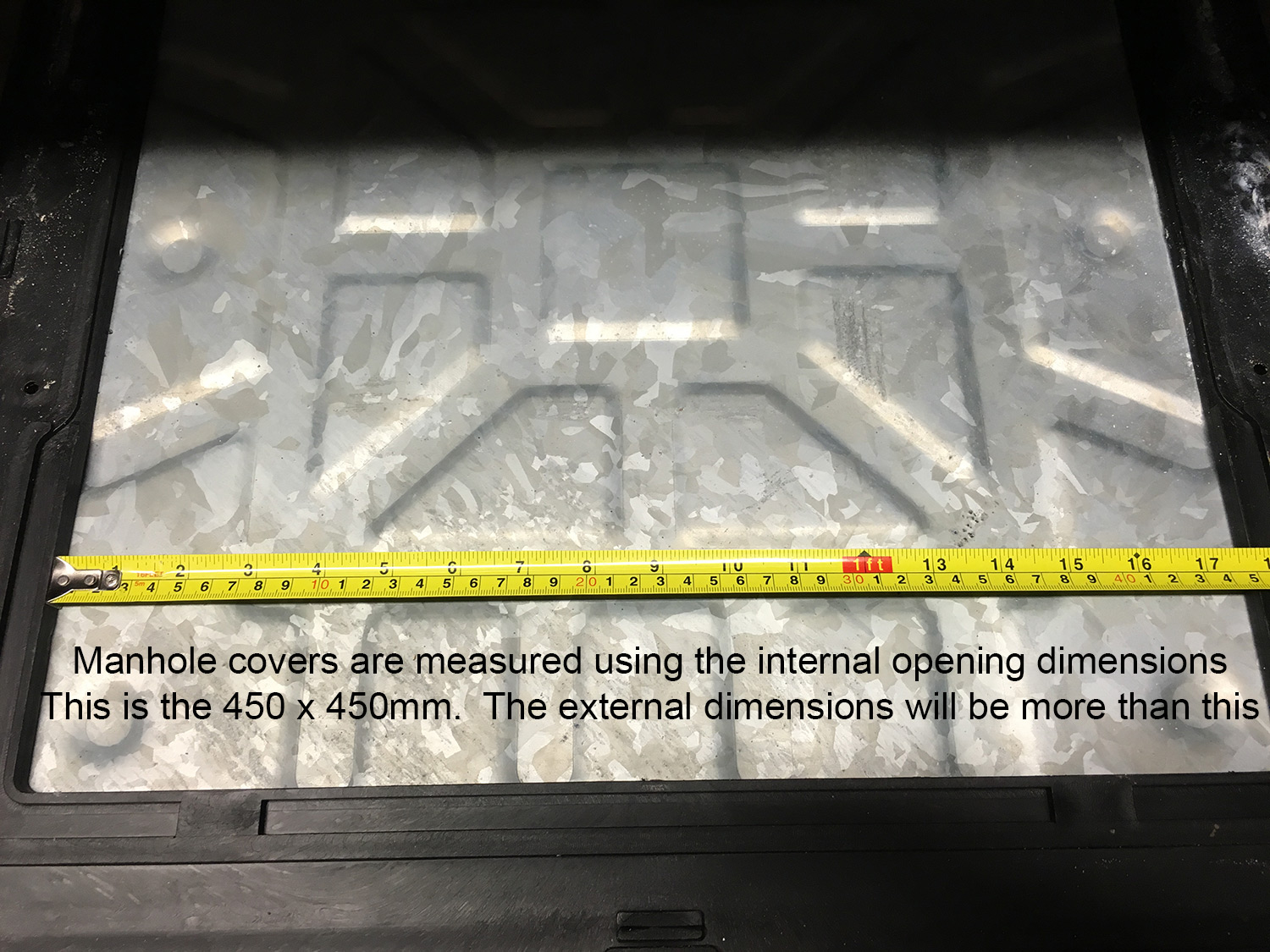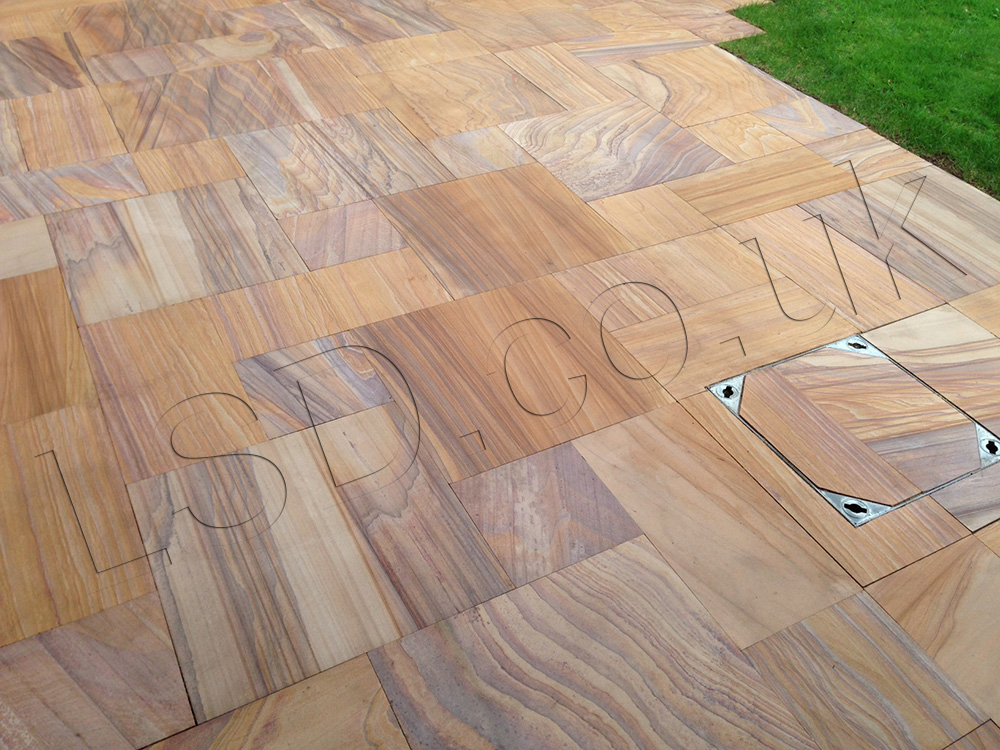Manhole Cover Buying Guide
In this guide we cover the different types of manhole covers, the different manhole cover materials and advise on which type is best for different uses, plus details on how to measure a manhole cover to get a perfect fit.
How to measure a manhole cover
It is a common error to measure the external dimensions of manhole covers. The vast majority of manhole cover dimensions given by all suppliers are the internal dimensions. To get an accurate measurement of the size you will need you will need to remove the cover and measure the clear opening size. This is the smallest section of the inside of the frame, and you should measure from one side to the other, straight across the walls of the frame.
This image better shows how these are measured:

This means that the exterior of the manhole cover will extend beyond the measurements on the product when you’re buying, so you may need to keep that in mind.
What type of manhole cover do I need?
There are lots of different types of manhole covers available, all with different materials and load-bearing recommendations, and it’s confusing to figure out which one is best for your project. We’ve put together a list of common manhole cover types and terms to help you choose the right manhole cover for your project:
Recessed Tray
A recessed manhole cover has a metal tray which allows you to lay block paving, slabs or decorative aggregate inside which matches the surrounding area. With a recessed tray manhole cover, you may need to check that the cover has a suitable load capacity, such as on a driveway where a car will pass over the area. These are typically used in driveways and gardens.
View all of our recessed tray manhole covers
Galvanised Steel Manhole Covers
Lightweight and easy to install, a galvanised steel cover is versatile as it can take a large load, typically able to be take up to 17 tonnes of weight
View all of our galvanised steel manhole covers
Ductile Iron Manhole Covers
Ductile iron is stronger, not as brittle and will not corrode as quickly as cast iron, which makes a ductile iron manhole cover strong and reliable. This is one of the heavier duty manhole cover materials, and are heavy to move, but offer a higher range of load capacity
View all of our ductile iron manhole covers
Plastic Manhole Covers
A plastic manhole cover is lightweight and easy to move, but is likely to have a low load capacity and will be slightly less hardwearing compared with metal, however these are ideal for areas that rarely get any foot traffic.
What manhole cover do I need for a patio?
Often people find their drainage access in their patio area, but a regular manhole cover can ruin the look of a well-designed garden. In these situations, we recommend using a recessed tray manhole cover - this means you can disguise the access point by laying matching materials to the surrounding patio. A recessed manhole cover is suitable for laying paving slabs, decorative aggregates, and with suitable drainage even turf. This means you won’t ruin the look of your patio or garden landscaping with a large metal cover, instead, you can keep the flow pattern of your paving across this, disguising the cover. When you need access, you use special manhole cover keys to lift the tray out, or you can also get an integrated handle recessed manhole cover
As you can see from the image below, a recessed tray manhole cover allows you to lay the patio inside and this disguises the cover

Manhole Cover Load Allowances & Class Codes
To ensure you get the right manhole cover for the area, you will first need to think about what weight the cover will need to withstand, based on what traffic will be going over the area. This is to make sure your cover will be able to take the strain of a car if it’s going to be on a driveway, or foot traffic in a garden, or furniture with people on for a patio for example.
Manhole Cover Tonne Ratings
- 2.5 tonne - Pedestrian use only.
- 5 tonne - Typically used for domestic driveways (supports a slow-moving wheel load of 1.25 tonnes)
- 10 tonne - Typically used for service areas (supports a slow-moving wheel load of 2.5 tonnes)
- 17 tonne - Suitable for a small rigid commercial vehicle (supports a slow moving wheel load of 4.25 tonnes)
Manhole Cover Load Class Codes
You may also find that manhole covers come with a number and letter rating, which is a load class code. The means it adheres to the British Standard EN 124:2015 regulations and are rated A15 to F900. The numbers are how many ‘kiloNewtons’ that the cover is able to withstand i.e. B125 is able to resist a load up to 125kN
- A15 – Pedestrian and cyclist use only
- B125 – Driveway duty and occasional light traffic such as access only routes
- C250 – slow moving cars and vans such as in car parks
- D400 – Fast moving heavy traffic such as on main roads
- E600 – Heavy, moving plant and plant with solid tyres such as forklifts in heavy duty areas like warehouses, docks etc.
- F900 – Particularly high wheel loads such as airports





